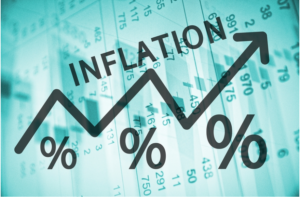Coronakrisen har ført til mangel på chips og til store omlægninger af produktionen og distributionen. Pimco tror ikke, at flaskehalsene fjernes før i andet halvår, og at der derfor vil være store prisstigninger. Men generelt venter Pimco en voksende efterspørgsel, ikke mindst som følge af Kunstig Intelligens. Det vil føre til store investeringsmuligheder, men også store risici, for der bliver såvel vindere som tabere. Ikke mindst spændingerne mellem Kina og USA vil påvirke udfaldet, da USA vil bremse den kinesiske udvikling. Pimco venter, at Taiwan og Sydkorea vil dominere chip-produktionen, men den helt store game-changer bliver, hvis Kina om få år bliver selvforsynende. I mellemtiden vil de helt store brugere af chips få fordele i forhold til mindre virksomheder, fordi de bedre kan klare forsyningsvanskeligheder og prissgtigninger.
Global Chip Shortage: The Winners and Losers
We expect global tech spending to grow, driving demand for semiconductor components and leading to above-trend growth for the sector.
Although we see significant opportunities in the semiconductor sector, we are watching a variety of risks as we assess which companies are likely to be winners and losers in the anticipated supercycle.
What is driving the global chip shortage?
Two key factors are driving the shortage: a COVID-19-driven disruption to supply and demand dynamics and ongoing geopolitical tensions between the U.S. and China.
Demand for consumer electronics surged during the pandemic as millions of people were forced to work and study from home. Global PC shipments grew by 10.7% in 4Q 2020 and 4.8% for the full year, with 275 million units shipped in 2020Footnote[1], the highest growth for the past 10 years. At the same time, demand for automotive chips declined as orders for new cars fell in 1H 2020.
Semiconductor foundries shifted capacity to consumer products, which tend to be more sophisticated and offer better margins. This has led to a shortage of capacity for industrial chip production. When auto sector demand rebounded in the second half of 2020, car companies couldn’t get enough.
Most Chinese chip manufacturers rely on U.S. software and machinery to fabricate semiconductors. Following the imposition of U.S. government restrictions on technology exports to China in 2019, Chinese companies started stockpiling chip inventory, contributing to the shortage. Chinese imports of semiconductors rose 14.6% year-on-year in 2020 to $350 billion (U.S.), or 2.4% of GDP, while its technology and R&D investment grew from 1.2% of GDP in 2019 to 1.5% of GDP in 2020Footnote[2].
In addition, geopolitical tensions have affected the appetite of global tech companies to invest. That’s added to the shortage because only a handful of advanced foundries can support the surge in demand for semiconductors. Over 83% of global foundry revenue is generated by companies headquartered in Taiwan and South KoreaFootnote[3], and the concentration is even worse for cutting-edge chips. The “just-in-time” model works best in a stable supply and demand environment. Now, Chinese and even global manufacturers may have to consider a “just-in-case” model given supply uncertainty, partly related to access to U.S. technology.
Investment opportunities and key risks
The pandemic has advanced the digitalization of businesses – in this cyclical recovery, the focus is not on infrastructure; it’s chips, not bricks, that matter. As we noted in a recent blog, “Green Light to a Greener Economy”, semiconductors are a key enabler of the economic recovery, placing the sector in a good position to benefit from trends such as power efficiency, 5G and increased electric vehicle production.
We expect Taiwan, South Korea and China will continue to lead in semiconductor production capital expenditures (capex), accounting for over 70% of global capex in 2021. Semiconductor exports accounted for 6% of South Korea’s GDP and 20% of Taiwan’s GDP in 2020Footnote[4]. Taiwan and South Korea are likely to continue to be leaders in this technology over the next three to five years, supporting growth and their currencies. Other winners from the global chip shortage are likely to be semiconductor equipment makers and market-leading companies that have better bargaining power to secure chips.
We expect greater challenges for smaller car manufacturers, consumer electronics companies and industrial companies which are unable to secure the required supply of chips. Chip designers could also struggle due to the inability to secure manufacturing capacity and the likelihood of price increases from foundries.
Overall, we believe that global tech spending is set to grow, driving demand for semiconductors and leading to above-trend growth for the sector. While we believe the sector is rich with opportunity, we would also suggest investors keep an eye on some key risks. Containment of the pandemic could accelerate the recovery of global economic activity, including demand for automotive chips, which could prolong near-term chip shortage.
An increase in U.S.–China tensions could exacerbate supply issues; President Joe Biden’s policy stance towards China on technology will be critical to the global semiconductor supply chain. China’s path to semiconductor self-sufficiency is a medium- to long-term risk, which could change the competitive landscape profoundly. In addition, any shortage of materials and components could have significant ramifications for the sector and other sectors that rely on chips.




